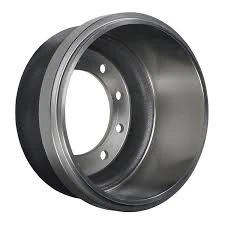
-
 Afrikaans
Afrikaans -
 Albanian
Albanian -
 Amharic
Amharic -
 Arabic
Arabic -
 Armenian
Armenian -
 Azerbaijani
Azerbaijani -
 Basque
Basque -
 Belarusian
Belarusian -
 Bengali
Bengali -
 Bosnian
Bosnian -
 Bulgarian
Bulgarian -
 Catalan
Catalan -
 Cebuano
Cebuano -
 Corsican
Corsican -
 Croatian
Croatian -
 Czech
Czech -
 Danish
Danish -
 Dutch
Dutch -
 ພາສາອັງກິດ
ພາສາອັງກິດ -
 Esperanto
Esperanto -
 Estonian
Estonian -
 Finnish
Finnish -
 French
French -
 Frisian
Frisian -
 Galician
Galician -
 Georgian
Georgian -
 German
German -
 Greek
Greek -
 Gujarati
Gujarati -
 Haitian Creole
Haitian Creole -
 hausa
hausa -
 hawaiian
hawaiian -
 Hebrew
Hebrew -
 Hindi
Hindi -
 Miao
Miao -
 Hungarian
Hungarian -
 Icelandic
Icelandic -
 igbo
igbo -
 Indonesian
Indonesian -
 irish
irish -
 Italian
Italian -
 Japanese
Japanese -
 Javanese
Javanese -
 Kannada
Kannada -
 kazakh
kazakh -
 Khmer
Khmer -
 Rwandese
Rwandese -
 Korean
Korean -
 Kurdish
Kurdish -
 Kyrgyz
Kyrgyz -
 Lao
Lao -
 Latin
Latin -
 Latvian
Latvian -
 Lithuanian
Lithuanian -
 Luxembourgish
Luxembourgish -
 Macedonian
Macedonian -
 Malgashi
Malgashi -
 Malay
Malay -
 Malayalam
Malayalam -
 Maltese
Maltese -
 Maori
Maori -
 Marathi
Marathi -
 Mongolian
Mongolian -
 Myanmar
Myanmar -
 Nepali
Nepali -
 Norwegian
Norwegian -
 Norwegian
Norwegian -
 Occitan
Occitan -
 Pashto
Pashto -
 Persian
Persian -
 Polish
Polish -
 Portuguese
Portuguese -
 Punjabi
Punjabi -
 Romanian
Romanian -
 Russian
Russian -
 Samoan
Samoan -
 Scottish Gaelic
Scottish Gaelic -
 Serbian
Serbian -
 Sesotho
Sesotho -
 Shona
Shona -
 Sindhi
Sindhi -
 Sinhala
Sinhala -
 Slovak
Slovak -
 Slovenian
Slovenian -
 Somali
Somali -
 Spanish
Spanish -
 Sundanese
Sundanese -
 Swahili
Swahili -
 Swedish
Swedish -
 Tagalog
Tagalog -
 Tajik
Tajik -
 Tamil
Tamil -
 Tatar
Tatar -
 Telugu
Telugu -
 Thai
Thai -
 Turkish
Turkish -
 Turkmen
Turkmen -
 Ukrainian
Ukrainian -
 Urdu
Urdu -
 Uighur
Uighur -
 Uzbek
Uzbek -
 Vietnamese
Vietnamese -
 Welsh
Welsh -
 Bantu
Bantu -
 Yiddish
Yiddish -
 Yoruba
Yoruba -
 Zulu
Zulu
Understanding the Use of a Brake Drum Micrometer for Accurate Measurements
How to Read a Brake Drum Micrometer
Brake drum micrometers serve as essential tools in automotive maintenance, particularly for measuring the thickness of brake drums. Ensuring that these components are within the specified tolerances is critical for vehicle safety and braking performance. Understanding how to read a brake drum micrometer accurately can help mechanics and enthusiasts determine whether a brake drum needs resurfacing or replacement. This article will guide you through the basic concepts and steps involved in using and interpreting a brake drum micrometer.
What is a Brake Drum Micrometer?
A brake drum micrometer is a precision measuring instrument designed to measure the inner diameter of brake drums. It typically consists of a calibrated body with a measuring spindle that extends and retracts. The device provides readings in millimeters or inches, allowing for precise measurements of brake drum thickness. Using this tool effectively can prevent issues such as brake failure due to excessive wear.
Step-by-Step Guide to Reading a Brake Drum Micrometer
1. Preparation Before using the micrometer, ensure that the brake drum is clean and free of debris. Any dirt or grime on the surface can lead to inaccurate measurements.
2. Setting the Tool Open the micrometer by turning the thimble until the measuring faces are wide enough to fit over the brake drum. Ensure that the tool is set to a point slightly larger than the nominal inner diameter of the drum.
how to read a brake drum micrometer

3. Measurement Process - Positioning Carefully position the micrometer inside the brake drum. It's crucial to align it perpendicular to the drum surface for an accurate reading. - Closing the Micrometer Slowly turn the thimble to close the micrometer around the drum. Apply gentle pressure to ensure a snug fit without forcing the tool, which could cause incorrect measurements. - Reading the Scale Once the micrometer is in place, take a look at the scale. Most micrometers have a main scale and a rotating thimble for measurements. The main scale typically indicates whole millimeters or inches, while the thimble can show increments of tenths or hundredths.
4. Taking the Reading To read the measurement, note the figure on the main scale where the thimble aligns with it. Then, look at the number on the thimble that aligns best with the horizontal line on the main scale. Add these two numbers together to obtain the total measurement.
5. Recording Measurements It is a good practice to take multiple measurements at different points on the brake drum to account for any irregularities or wear that may not be evident in a single reading. Record these measurements for future reference and to compare them against the manufacturer’s specifications.
6. Interpreting Results After recording the measurements, compare them to the standard specifications for the brake drum. If the thickness is within the recommended limits, the drum can be reused. However, if the readings fall below the minimum thickness, it’s advisable to replace the drum to maintain brake efficiency and safety.
Conclusion
Reading a brake drum micrometer is a straightforward process that, when done correctly, can significantly enhance vehicle safety. By following the steps outlined above, automotive technicians can accurately gauge the condition of brake drums and make informed decisions regarding repair or replacement. Regular checks and knowledge of how to use this precision tool not only ensure good performance but also play a vital role in maintaining the overall safety of a vehicle on the road.
-
Why Choosing the Right Brake Drum Manufacturer Matters for Vehicle Safety and Performanceຂ່າວJun.05,2025
-
Understanding Heavy Duty Brake Drums: Key to Truck Safety and Performanceຂ່າວJun.05,2025
-
Reliable Braking Systems: Rear and Trailer Drum Brake Solutions for Heavy-Duty Applicationsຂ່າວJun.05,2025
-
Power and Precision: Why Brake Drums Still Dominate in Vehicle Safety Systemsຂ່າວJun.05,2025
-
Brake Drums: Essential Components for Vehicle Safety and Performanceຂ່າວJun.05,2025
-
Superior Brake Drums & Rotors for Reliable Stopping Powerຂ່າວJun.03,2025
-
Premium Brake Drums for Maximum Stopping Powerຂ່າວJun.03,2025
